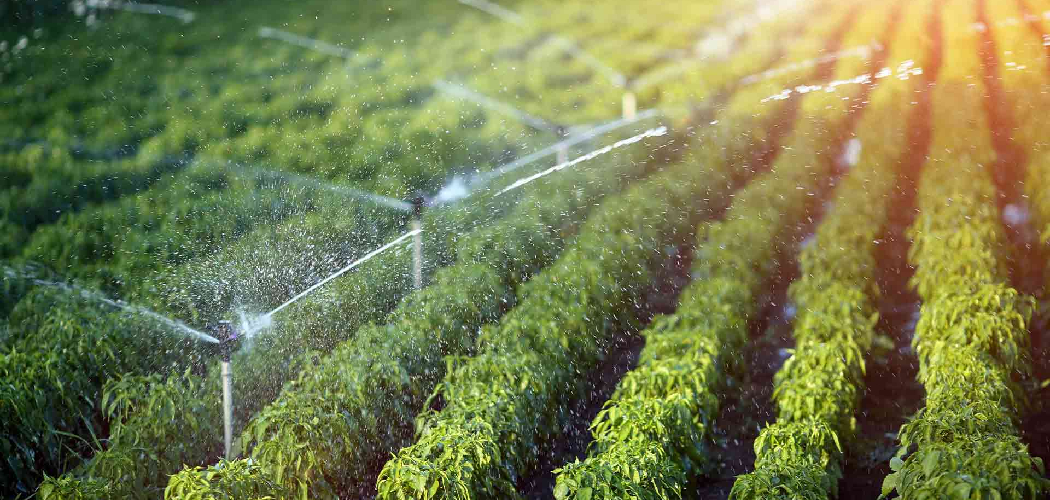Are you looking to save time and money watering your garden or lawn? With an irrigation system, you can be sure that your outdoor space is properly hydrated.
Whether it’s a small flower bed or the entire backyard, having the right irrigation setup will help plants survive all seasons. An organized irrigation system can significantly reduce water waste, promote the health of your plants, and make ongoing maintenance easier.
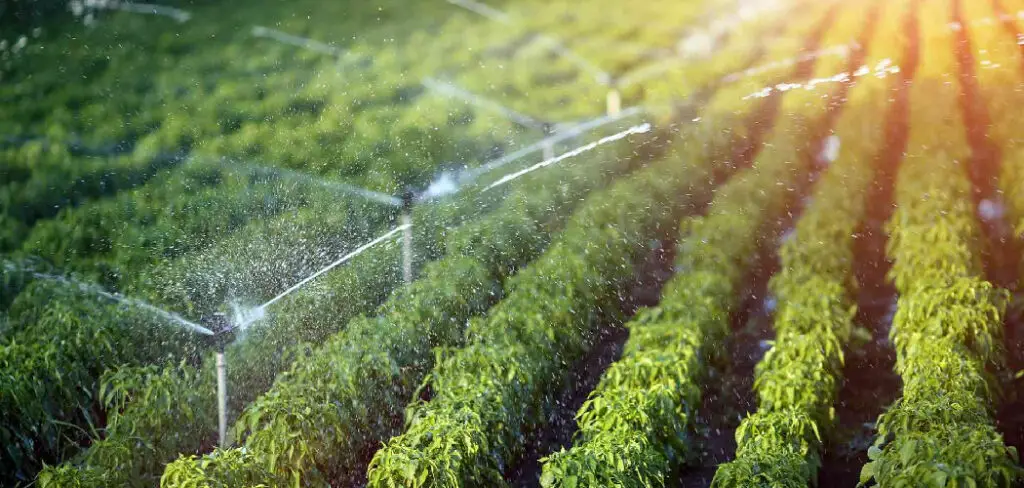
Fortunately, designing a reliable irrigation system doesn’t have to be intimidating or overwhelming. If this sounds like something you want to do yourself, you’ve come to the right place! In this blog post, we’ll cover how to design and install a complete irrigation system that works for any home gardening project.
From understanding what materials are necessary to considering local weather patterns — follow our advice on how to design a irrigation system as we take you through every step of setting up an efficient drip-irrigation system.
Necessary Items
The first step to designing an irrigation system is gathering all the required materials and tools. These are the essential items you’ll need to have on hand before you begin your project:
- Irrigation tubing or piping (depending on the size of your project)
- Water spigot or outdoor faucet connection
- Drippers, sprinkler heads, or micro-sprayers (depending on the type of irrigation system you’re installing)
- Hose connectors
- End caps and plugs
- Timer or controller (optional, but highly recommended for automated watering)
- Filter (optional, but recommended to prevent clogging of drippers and sprinklers)
- Pressure regulator (optional, but recommended to regulate water flow)
Once you have all your materials gathered, you’re ready to begin designing your irrigation system.
10 Steps on How to Design a Irrigation System
Step 1: Consider Local Weather Patterns
Before you start digging and laying out your irrigation system, it’s important to consider the local weather patterns in your area. This will help determine how much water your plants need and when they need it. If you live in a hotter or drier climate, you may need to adjust the frequency and duration of your watering schedule.
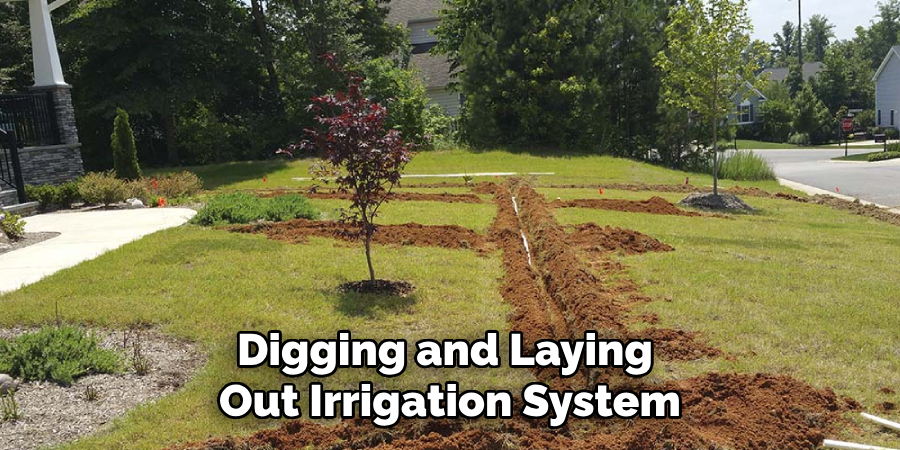
Step 2: Measure Your Garden or Lawn
To ensure you have enough materials, accurately measure the size of your garden or lawn. This will help determine the length and amount of tubing or piping needed for your irrigation system.
Step 3: Choose the Type of Irrigation System
There are three main types of irrigation systems: drip irrigation, sprinkler irrigation, and micro-sprinkler irrigation. Each has advantages and disadvantages, so choose the one that best fits your gardening needs and budget.
Step 4: Map Out Your Irrigation System
Using a pencil and paper or an online planner, map out your irrigation system. This will help visualize where each component will be placed and ensure proper coverage of your garden or lawn.
Step 5: Locate Your Water Source
Identify the location of your water source, whether it’s a fixture or outdoor faucet. This will be where you connect your irrigation system to a water supply.
Step 6: Lay Out Irrigation Tubing or Piping
Based on your map, begin laying out the irrigation tubing or piping in the desired locations. Make sure to secure them with stakes or clips to prevent movement.
Step 7: Install Drippers, Sprinkler Heads, or Micro-Sprayers
Depending on your chosen type of irrigation system, install the appropriate components onto the tubing or piping according to your map.
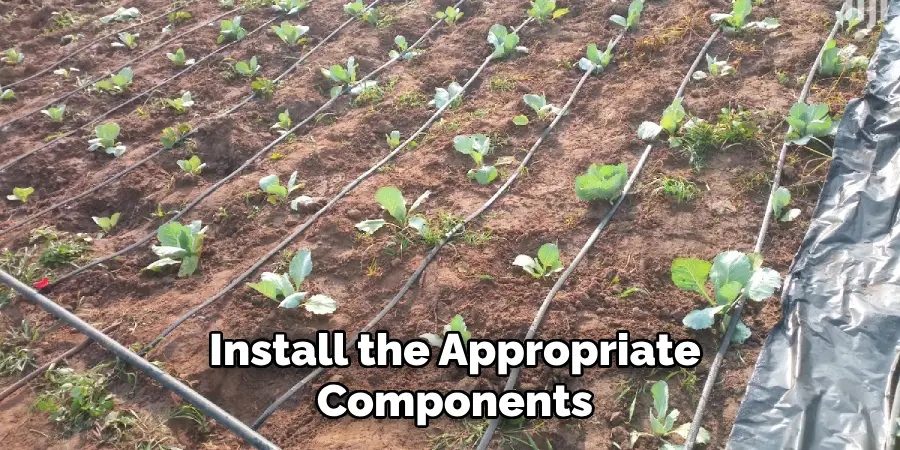
Step 8: Connect Components and Test Water Flow
Using hose connectors, connect all the components of your irrigation system and turn on the water supply to test the water flow. Make any necessary adjustments to ensure proper coverage and pressure.
Step 9: Consider Automation with a Timer or Controller
Consider installing a timer or controller if you want a hands-off approach to watering your garden or lawn. This will allow you to set a watering schedule and ensure your plants are properly hydrated even when you’re not home.
Step 10: Add Optional Accessories
To customize your irrigation system further, consider adding optional accessories like a filter to prevent clogging or a pressure regulator to regulate water flow. You can also add end caps and plugs to seal off any open ends of tubing or piping.
With some planning and the right tools, designing and installing an irrigation system for your garden or lawn is a task that any homeowner can tackle. Remember to consider local weather patterns, accurately measure your outdoor space, choose the appropriate type of irrigation system, and map out your layout before beginning installation. With this guide, you’ll have a thriving garden or lawn all year round.
8 Care Tips for Your Irrigation System
Now that your irrigation system is designed and installed, it’s important to maintain it for optimal performance. Here are some care tips for your irrigation system:

1. Winterize the Irrigation System
Before the first freeze of the season, turn off and drain your irrigation system to prevent any damage from freezing water. This will also help extend the life of your system.
2. Regularly Check for Leaks or Damage
Inspect your irrigation system regularly for any leaks or damages. This will help prevent water waste and ensure proper hydration for your plants.
3. Adjust the Watering Schedule According to the Season
As seasons change, so do the water needs of your plants. Adjust your watering schedule accordingly to avoid over or under-watering.
4. Clean and Replace Components
Over time, components of your irrigation system may become clogged or damaged. It’s important to regularly clean and replace these parts to maintain optimal water flow.
5. Consider Drip Irrigation for Delicate Plants
If you have delicate plants or flowers, consider using a drip irrigation system, as it provides a slow and steady water supply directly to the roots.
6. Monitor Water Usage
Keep track of your water usage to ensure you’re watering enough and to identify any potential issues with your irrigation system.
7. Adjust Sprinkler Heads for Proper Coverage
If you notice dry or flooded areas in your garden, adjust the direction and angle of your sprinkler heads for more even coverage.
8. Regularly Inspect and Maintain Water Source
Regularly inspect and maintain your water source, such as a fixture or outdoor faucet, to ensure proper connection and water flow for your irrigation system.
By following these care tips, you can ensure that your irrigation system continues to provide efficient and effective watering for your garden or lawn. With proper maintenance, your irrigation system will last for years to come.
Frequently Asked Questions
Can I Install an Irrigation System Myself?
Yes, with the right tools and guidance, installing an irrigation system is a DIY project that any homeowner can tackle.
How Will an Irrigation System Benefit My Garden or Lawn?
An irrigation system provides a consistent and efficient way to water your plants, promoting healthy growth and reducing the time and effort required for manual watering.
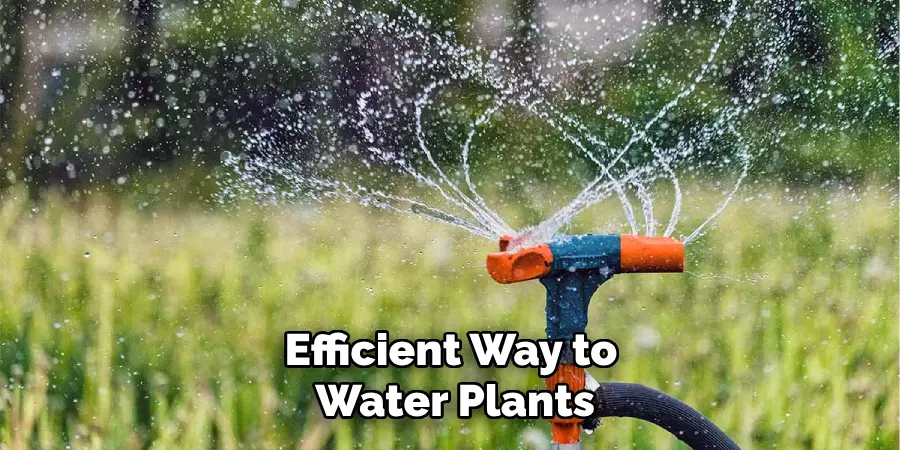
How Often Should I Water My Plants Using an Irrigation System?
It depends on the type of plants you have, local weather patterns, and the type of irrigation system you have installed. It’s important to monitor and adjust your watering schedule as needed regularly.
Do I Need Any Special Tools for Installing an Irrigation System?
You may need a shovel, tape measure, scissors, hose connectors, and stakes or clips to secure the tubing or piping in place. You may also need a drill for installing sprinkler heads or micro-sprayers. It’s best to consult your specific irrigation system’s instructions for a complete list of necessary tools.
How Long Will My Irrigation System Last?
With proper maintenance, an irrigation system can last for years. Some components may need to be replaced over time, but the overall system should have a long lifespan. Inspecting and maintaining your system to ensure its longevity regularly is important.
Installing an irrigation system for your garden or lawn may seem daunting, but it can be easily accomplished with some planning and the right tools. By following the steps outlined in this guide and properly maintaining your system, you can have a thriving outdoor space all year round.
Conclusion
Designing and installing an irrigation system may seem daunting, but with some planning and the right tools, it can be easily accomplished by any homeowner. In conclusion, designing an irrigation system is a complex yet rewarding task that requires knowledge and forethought.
By utilizing the tried and true strategies on how to design a irrigation system outlined in this post, you are sure to create a system that meets your needs and stands the test of time. Not only will you be able to construct a functional irrigation system, but by following these tips, you will also save yourself on costly repairs due to poor design decisions.
So do your research and design carefully—your garden will thank you! Now get out there and get designing! Remember to consider local weather patterns, accurately measure your outdoor space, choose the appropriate type of irrigation system, and map out your layout before beginning installation.
Don’t forget to properly maintain your system with regular checks, cleaning, and adjustments. With these tips, your garden or lawn will be well-hydrated and healthy all year round.
About
Outdoor Fixes is a distinguished figure in the world of Diy design, with a decade of expertise creating innovative and sustainable Diy solutions.
His professional focus lies in merging traditional craftsmanship with modern manufacturing techniques,
fostering designs that are both practical and environmentally conscious. As the author of diy,
outdoorfixes delves into the art and science of outdoorfixes-making, inspiring artisans and industry professionals alike.
Education RMIT University
(Melbourne, Australia) Associate Degree in Design (Outdoor Fixes) Focus on sustainable design, industry-driven projects,
and practical craftsmanship. Gained hands-on experience with traditional and digital manufacturing tools, such as CAD and CNC software.
Nottingham Trent University
(United Kingdom) Bachelor’s in outdoorfixes.com and Product Design (Honors) Specialized in product design with a focus on blending creativity with production
techniques. Participated in industry projects, working with companies like John Lewis and Vitsoe to gain real-world insights.
Publications and Impact
In diy, Outdoor Fixes his insights on indoor design processes, materials, and strategies for efficient production.
His writing bridges the gap between artisan knowledge and modern industry needs, making it a must-read for both budding designers and seasoned professionals.

